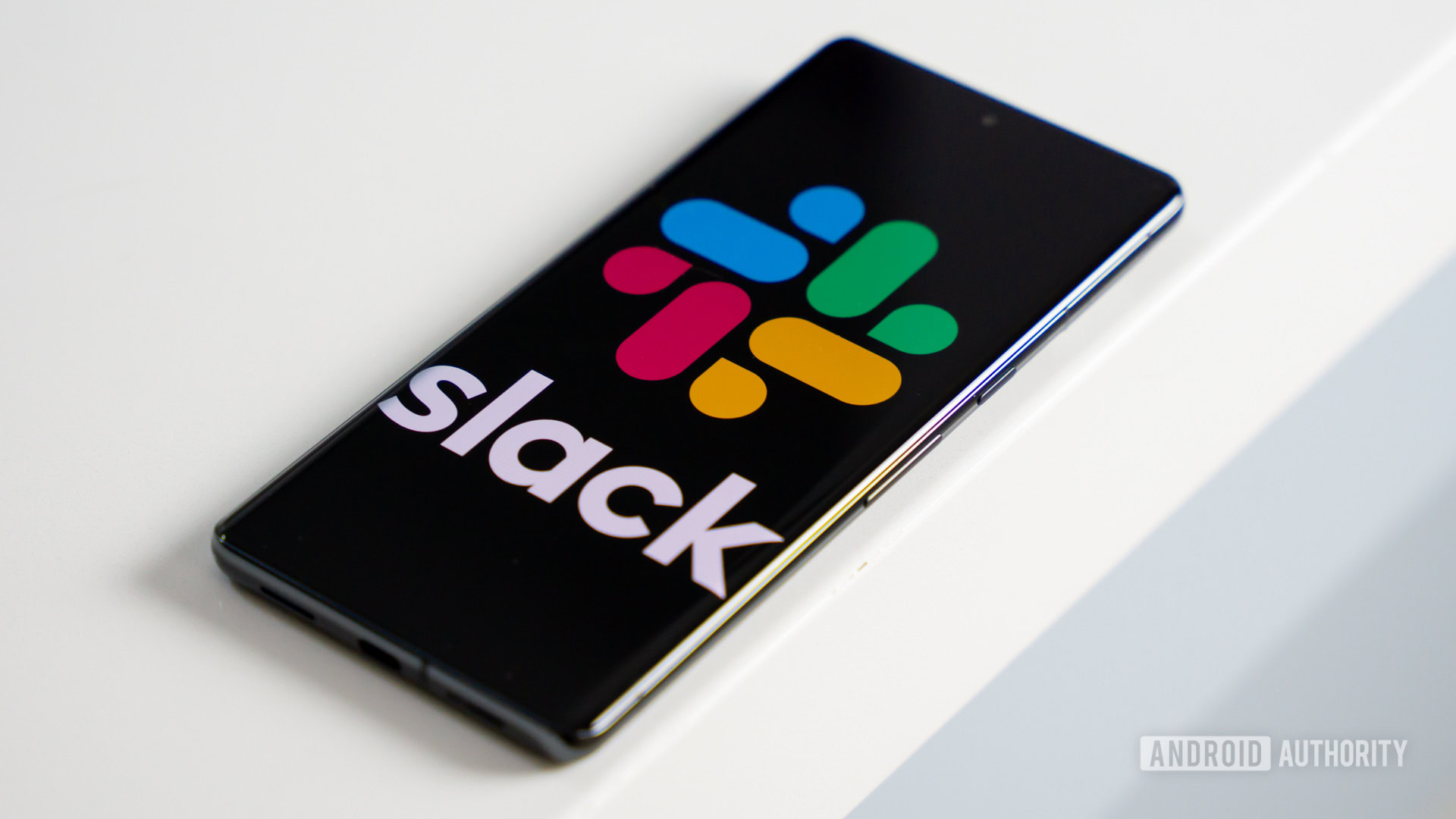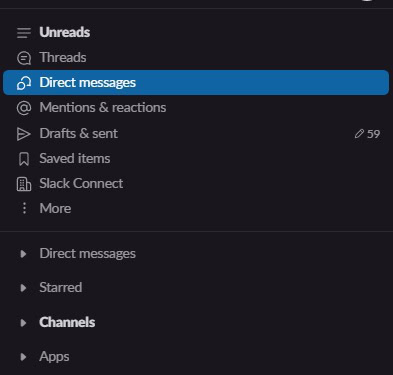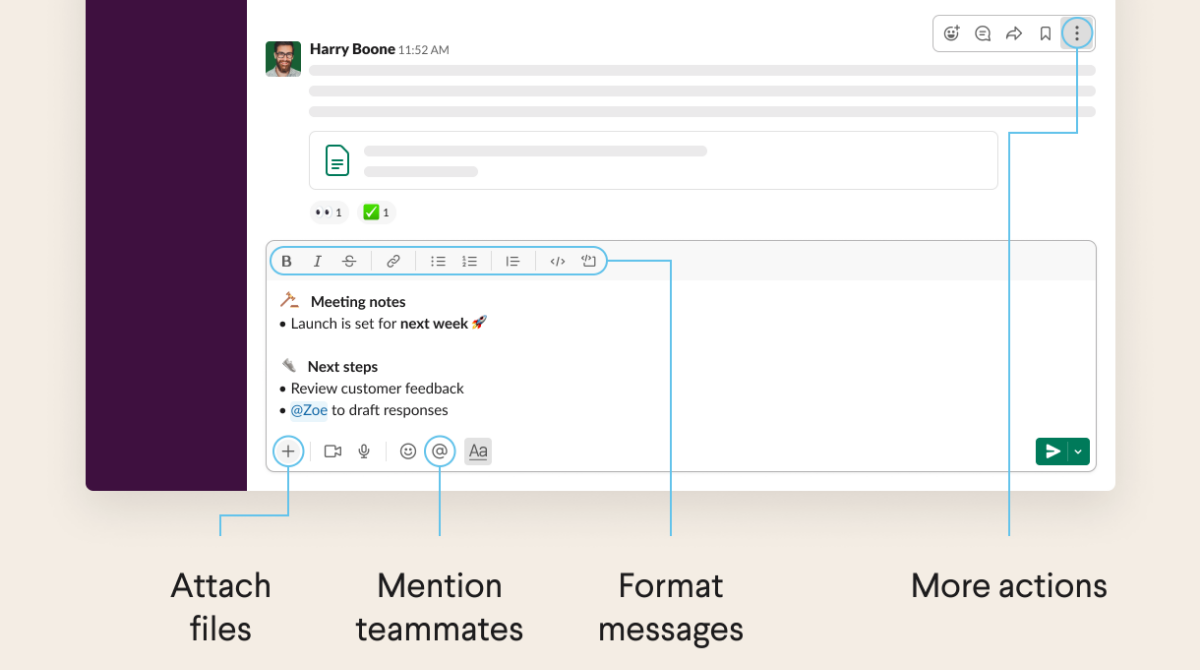Affiliate links on Android Authority may earn us a commission. Learn more.
What is Slack and how does it work?

Slack is quickly becoming one of the most popular workplace tools in the world. Not only is Slack popular among Fortune 500 companies and big businesses, but many smaller teams also use the service. But what is Slack exactly, how does Slack work, and why should you or your workplace consider adopting it? Let’s take a closer look.
What is Slack?
Did you know Slack actually is actually an acronym? It stands for Searchable Log of All Communications and Knowledge. In other words, Slack is an easily searchable messaging platform designed with workplaces in mind.
Basically, you could almost think of it as Discord, but instead of a focus on entertainment and community, Slack is for teams. Slack is primarily a chat client but has features like calling, sharing and uploading files, and much more.
Many jobs with remote staff or freelancers use Slack to communicate better on projects. In fact, Android Authority uses Slack for its internal communications as well.
How to get started with Slack
Getting started with Slack depends on what you plan to do. Are you’re looking to start your own Slack team? Or did you get an invite from an existing team and aren’t sure how to join? We’ll help you out with both.
How to sign up for a new Slack Workspace
Signing up for a new workspace is easy, and free. You just need to follow a few simple steps:
- Go to Slack’s website. You’ll see a button that says Sign up with email; you just need to click on it. Or, if you prefer to associate your Google Account, you can click the Sign up with Google button instead.
- Next, you’ll enter your email or sign into your existing Google account, depending on which option you picked in step 1.
- The new page will have a Create a Workspace button. Click it and enter your company name. Click Next.
- After this it will ask you to state your name and upload a photo.
- In the next screen you’ll be asked to enter the email addresses of any other people you wish to add to the workspace. You can also skip the step if you aren’t ready to add anyone yet.
- Slack will ask you to specify what your team is currently working on right now. Can be a campaign, project, etc. This will be your first channel’s name so keep that in mind.
- That’s it. You’ll now have a workspace with a few channels, including general, random, and the name of the channel you added. If you don’t want to keep the default channels, you can easily archive them later. Slack will now take you through a brief tutorial, though you can skip it if you’re already aware of how Slack works.
How to join a Slack workspace you’ve been invited to
If you were invited to join a Slack workspace, all you need to do is click on an email with your invite. Clicking on this will take you to Slack, where you’ll be asked to accept your invite. The site will take you through the steps of entering a username and password, and then you’ll jump right into the workspace you’ve just joined.
To leave a Slack Worksplace you first need to log into your Slack workspace at my.slack.com/account. You’ll see a Deactivate Account button, hit it and follow the prompts.
How does Slack work, and what can you do with it?
Slack can feel a bit overwhelming at first. There are tons of channels in some workspaces, not to mention you’ll need to get a feel for settings, how apps work, and much more.
Let’s start by walking you through the basic aspects of the interface:
The Left side bar

Workspace
At the very top of the bar, you’ll see the name of your Workspace and an arrow that looks to be pointing down. Clicking on this arrow will open up additional settings that let you do things like invite people to the workspace, create a new channel, set your preferences, open the full settings and administration panel, look through Slack tools, and even add new workspaces.
You can learn more about workspace settings directly from Slack.
Unread
Unread is pretty self-explanatory. You get a full view of every Slack channel that has an unread message, as well as any direct messages. Don’t want to read through them all? There’s a big Mark all messages read button at the very bottom.
Threads
One of the nice things about messages on Slack is that you can create a thread around a specific message. This allows you to leave comments or interact with the original message sender without flooding the main message feed. The Threads section on the left side bar is a quick way to see any threads you are part of. Unlike unread, Threads don’t go away. That means you can keep scrolling (or use the search menu) to look up a specific thread even if it took place literally years ago.
Direct Messages
Direct messages give you a list of every person on the team right within the left bar. Additionally, clicking on Direct Messages will open a new window with every person you’ve had contact with directly. This includes the date and time of the last contact as well.
If you need to contact someone specifically, you’ll find a To box at the very top. Click on the field and enter the name of the user. You can keep adding names if you want more than one person to receive the message at a time.
Mentions & Reactions
Mentions and reactions is a section that takes you through any message where you were mentioned via the @username command. It also lists reactions, such as emoji responses to messages you sent. Check out our guide to learn more about how to add Emoji in Slack.
Drafts & Sent
Pretty self-explanatory; this option shows you all your unsent drafts, scheduled posts, and sent messages.
Saved Items
You can save certain messages, snippets, comments, and even whole posts to make it easier to find the things that matter the most to you. For example, if you need to keep a list of all instructions given to you by a team leader.
Slack Connect
What is Slack Connect? Honestly, it’s a feature that your organization may or may not use. Basically, it lets you communicate and collab with other external organizations in a secure way.
More
More is a catch-all button you click on to get a submenu that shows all channels, files, people & user groups, and apps. You can also customize what shows in this list.
Direct Messages, Starred, Channels, and Apps
The last sections in the left sidebar all function the same, giving you a collapsible list of all your DMs, Starred contacts, Channels you’re in, and active Apps. Each has a sub-menu you can activate by clicking on them, which contains options such as the ability to create new messages, star new contacts, add yourself to another channel, or add a new app integration.
To leave a Slack channel, you’ll right-click on desktop or long press on mobile over the name of the channel you’re currently in. Select the option Leave Channel.
Creating a new channel is super easy. From the sidebar you’ll want to click on the down arrow next to Channels. Select the option Create a channel. You’ll then be asked to give it a name. Push next, choose if the channel is public or private, and then you’ll be able to add any people you want to the channel.
Regardless of your platform, all you need to do is select the channel you want to remove someone from via the left bar. In the chat field, type /remove @membername. Replace “member name” with the person you wish to remove. Tap on the paper airplane icon, and that’s it.
Go to the Channels tab in the left bar. Click on the Plus arrow. You’ll see an option called Browse Channels. This will give you a list of any available channels, though private channels won’t be listed as they require an invite from an existing member.
The Navigation bar

- The History icon shows you the channels and contacts you’ve most recently clicked on.
- Search lets you find specific files, people, conversations, and more.
- Help brings up a handy help menu that can help teach you even more about Slack.
Lastly, there’s your portrait. Clicking on this opens a sub-menu that allows you to quickly add a status update with an emoji to represent it. You can also pause notifications, set your status from active to away, sign out, or mess with your profile and preferences.
The Message Field
There are many things you can easily do right from the message field. Below we run you through the core functions found in the toolbar.
Attaching files
- To attach a file, you’ll want to hit the Plus icon. This brings up a new menu.
- You’ll want to pick the option Recent Files or Upload from your Computer.
- Recent files will give you a list of attachments you’ve recently sent, while upload will let you pick a new file to bring to Slack.
Recording video
The Camera symbol is right next to the Attach symbol. Here’s how it works:
- Click on the Camera symbol and a new window will pop up.
- Hit the Record button to start recording from your webcam.
- You can hit Pause if you need to stop for a moment or Stop when you’re completely done.
- After you can hit Done, the video clip can be shared with others, or you can click the download button to store the recording locally.
Recording audio
Once you hit the button that looks like a Microphone, you’ll immediately start recording. There’s an X button you can hit to close out after recording.
Sending emojis
Click on the Emoji icon will open a list of emojis in a new sub-window. At the very top of the window, you’ll see a bunch of icons for different emoji sections like smileys, animals and nature, travel, and more. There’s also a search symbol to the left of this bar where you can type in what emoji you’re looking for.
Mentioning teammates
The @ will open up a panel of names, letting you mention someone. This is a handy way to inform specific people or even custom groups of important information. For example, if you sent the mention @channel you’d alert everyone subscribed to that channel.
Formatting the message
The Aa button opens up a quick formatting toolbar. This let’s you add bullet lists, bold text, add links, and more.
Sending the message
Lastly, you can send a message by clicking on the Airplane looking symbol. Conversely, you can hit the down arrow next to it to bring up a menu that will let you schedule a Slack message for later.
Yes, you can hover over any message you sent in the messaging field. On desktop you’ll see three dots stacked on top of each other. Click on this and you’ll be give the option to edit or even delete a message. If you’re authorized in the channel you might even be able to delete messages from guests this way, too.
What are Slack apps, and how do they work?
One of the best things about Slack is that tons of services play nicely with it. Some apps integrate with services like Asana for team management, Google Calendar for shared calendars, Airtable for data management, Zoom for video calls, and, well, you get the idea. That’s just scratching the surface, as there are over 2,400 apps in the Slack App directory.
How much does Slack cost?
Although there are premium tiers, a basic Slack membership won’t cost anything. The free plan lets you browse and search a team’s most recent 10,000 messages, gives you 5GB of storage, and lets you use 10 apps or custom integrations.
Need more than that? There are three premium packages available:
- Pro ($7.25 a month per user)
- Business+ ($12.50 a month per user)
- Enterprise Grid (Varies dependent on org size)
All three plans have unlimited message history, apps, integrations, and huddles (calls, basically — here’s a guide that explains more on how Slack huddles work.) The Business+ tier adds a few extras like a 99.99% guaranteed uptime, user provisioning and provision, and a few other extras. The Enterprise Grid tier includes the features of the cheaper paid tiers but gives you unlimited workspaces and a few other features. You can learn more about the plans in our comparison of Slack’s plans and pricing.
What platforms does Slack support?
Slack is widely available on almost every major platform, including iOS, Android, MacOS, Windows, and even Linux. In addition to official apps, Slack also can be used in select browsers, including Chrome, Firefox, and Safari.
Bottom-line, there are no major platforms that are incompatible with Slack. You can read more about the different apps and browsers on Slack’s official website.
Other Frequently Asked Questions
Popular alternatives to Slack include Microsoft Teams, Discord and Mattermost.
Type /reminder into any messaging field. Next enter the details of the reminder using this format: /remind [ yourself or #channel ] [ what ] [ when ].
From your desktop you’ll click on your profile picture in the top right. Go to Preferences, and click Themes. You’ll see a list of themes that you can choose from.
